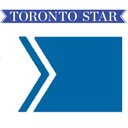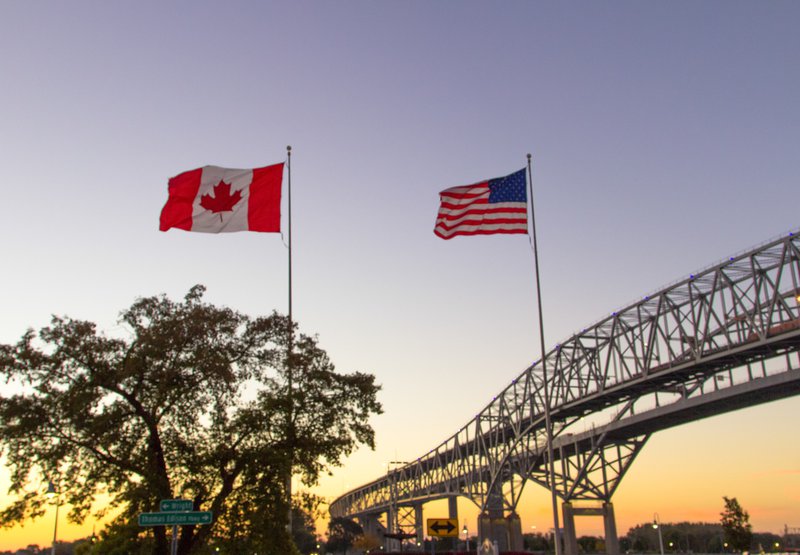
By Nicholas KeungI
July 15, 2020
In the new world order heralded by the COVID-19 pandemic, Canada is going to have to rethink just what border security means, experts say.
On Tuesday, media reports indicated Ottawa and Washington plan to extend the current shutdown of the Canada-U.S. border for 30 more days beyond the previously announced endpoint of July 21.

But there are longer-term implications that the health crisis has made clear, observers say, including the presence of public health guards at our border.
“There is a general appreciation that a restricted border regime has been imposed temporarily because COVID-19 is not under control,” said Wesley Wark, a leading Canadian security expert, told the Star.
“That view is shortsighted, and it doesn’t reflect the reality that we’re moving toward. One of the new (things) we are going to have to do is some more strategic thinking about monitoring bio-security hazards at borders as a long-term proposition.”
Just as the Sept. 11, 2001 terrorism attacks in the U.S. transformed security measures at airports, the pandemic will make health and temperature screening, as well as the requirement to wear masks, the new norm, some predict.
“We’re going to see an intensification of surveillance technology as a policy response to the pandemic at the border,” said Sharry Aiken, immigration law professor at Queen’s University.
“We are going to see the border being pushed further away from the geographical border points and into all of our lives, as we distinguish who has a right to be here and who doesn’t.”
While Canada currently has a more blanket approach that bans all non-essential travel regardless of country of origin, Wark believes border restrictions down the road will have to be more targeted based on data on the prevalence of the pandemic in other countries.
“The blanket approach is easier. That’s why we have one at the moment. We have to move to a more targeted approach to allow travel,” said Wark, a visiting professor at the University of Ottawa’s Centre for International Policy Studies.
“If you’re going to have selective control of travels, then you have to be prepared to be nimble and agile, to open and close the border quickly. That complicates it.”
It will also require a more nuanced approach for different types of visitors. Screening, tracking and self-isolation measures may vary for tourists, international students and migrant workers.
Aiken said she has no issues with the use of enhanced technology to detect and monitor people for the sake of public health, but that it must be done in an open and transparent manner in which the public is informed and there are remedies available when mistakes are made.
“My biggest concern is not who’s coming, but what a piecemeal job we’re doing of actually following up on these quarantine requirements. We have put in place steep sanctions, but there are no implementation measures,” said Aiken.
“These (implementation) challenges can only be fixed by money. It requires resources. I don’t think the answer is just close the border even further. Border clamping-down can work temporarily, but it’s a not a long-term solution.”
As Canada is currently enjoying a relative lull with the pandemic, Wark said officials must start formulating an emergency plan before a second wave hits, to make sure border measures are not haphazardly imposed as Canadians experienced during the first wave.
“We will have to have a plan ready to roll out immediately when global pandemic occurs,” he said.
The emergency border plan must include public health officials at border points to inform immigration policy as border agents are no health experts, observers say.
“What needs to change is information processing and application. We need better information system to distinguish between potentially dangerous travellers and the vast majority who pose no threats,” said Wark.
Never miss the latest news from the Star, including up-to-date coronavirus coverage, with our email newsletters
Sign Up Now
“We need that information capacity to be increased to better support human judgments.”
In the long run, with frequent pandemic outbreaks, Wark said he could see the current measures of temperature screening and self-quarantine to remain in place and maybe a new item in passports to indicate the expiry of the traveler’s COVID-19 vaccine when one is available.
“We need to reinvent a smart border that takes into account the reality of threats present to Canada and at the same time try to ensure Canada is open to migration, trade and travel,” said Wark. “We need to work on not just a secure border but a smart border that works for Canada.”
Wark said he’s not sure when Canada will move to open its border to select countries because Ottawa certainly doesn’t want to offend and slight its biggest trade partner south of the border, which is still grappling with the spread of coronavirus.
“That’s another friction point in the U.S.-Canada relationship. The government is anxious about that,” Wark said.


